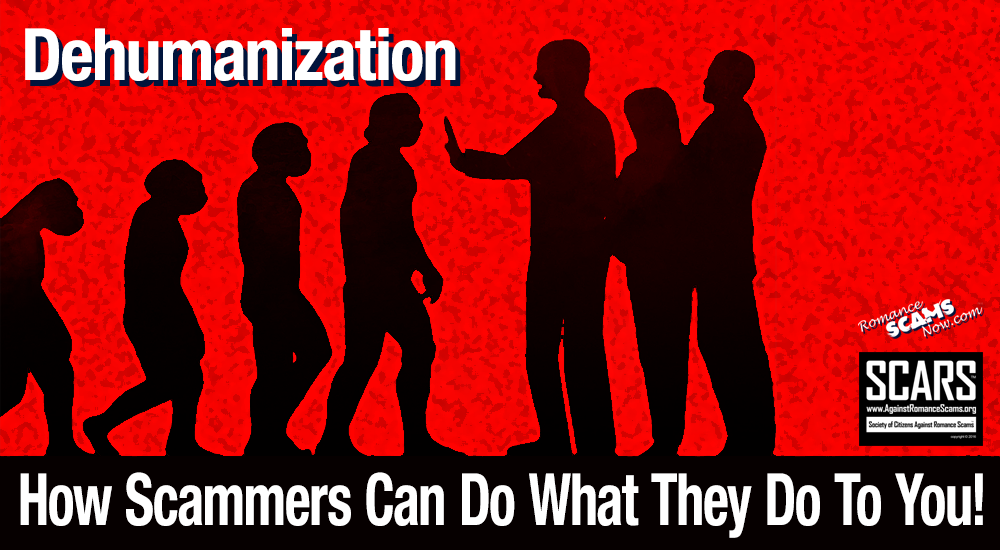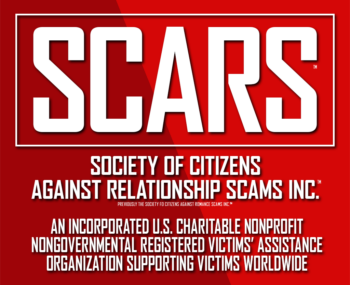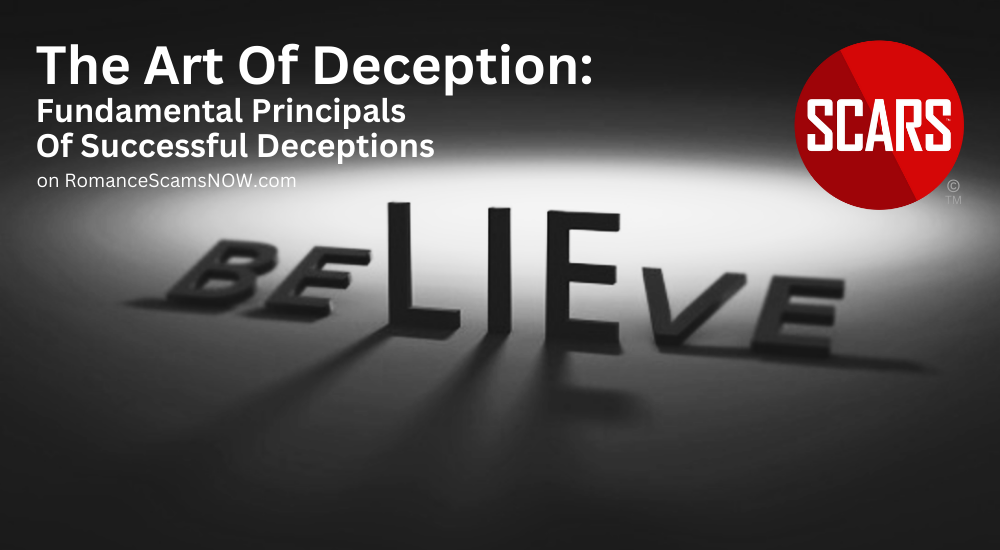SCARS™ Guide: Dehumanization – How Scammers Can Do What They Do To You!
Dehumanization Is The Viewing Certain People As Less Than Human Or As Objects To Be Used Or Manipulated
[lwptoc]
‘Less Than Human’ is the Psychology of Cruelty
Dehumanizing is one of the more serious aberrations of human psychology. It allows us all to perform the most unspeakable acts as though they are nothing because we are doing them to others who are not like us, who are less than human.
We all do it in one way or another. When we talk about another political party we may call them insane, when we call scammers names such as “animals” or “monkeys”, when spouses abuse their partners verbally by putting them down, when parents berate their children, when employers put down their employees; these are all forms of “Dehumanization.” This is also what allows scammers to view their victims as objects to be manipulated because their victims are not human to them – not even their own family members are human to some of them as evidenced by the atrocities that ritualist Yahoo or Sakawa perform.
Scammers view their victims in a variety of ways: as “Colonialists” or as “Stupid Fools” who give away their money, or any number of condescending terms that dehumanize their victims. Scammers can do what they do because they do not view their victims as equal to them or even really as a human being. In this way, scams are not only crimes in the civil and criminal sense, but they are also a violation of your civil rights and human rights. In fact, there is an attempt to try scammers in the International Criminal Court by viewing certain kinds of scams as Crimes Against Humanity – but thus far this has not been universally accepted.
Yahoo Boys, Sakawa Boys, and other scammers that engage in psychological manipulation are criminals that are intent of causing the maximum harm for the maximum gain.
But the harm is simply part of the fun for them – it is the sport. No different than “boiler room” telemarketers that jam products down the throats of consumers. Both the predatory telemarketers and scammers are criminals that use manipulation and control to achieve what they want at the expense of their victims. Both view their victims as sub-human and that is what allows them to sleep at night.
Some victims may feel differently because they identify with their manipulators. After all countless scammers have admitted their scams and that they came to love their victims in the end – this is just another set of lies and manipulation, and sadly countless victims believe it and stay connected to their scammers. This is just a variation of the “Stockholm syndrome.”
Victims Do It Too!
However, the same dehumanizing can be said of victims referring to scammers. When victims call scammers names it does exactly the same thing that the scammers do to them and propagates the acts of dehumanization from the scammer back to the victim in an endless circle. Name calling in any form is juvenile and only serves to obscure the reality that scammers are criminals (a taxonomy not an epithet).
Treating scammers as “less than human” does not help the victim recover nor achieve any justice for victims, it just engages in the same dehumanizing name calling to make victims “feel” better. Except it is only a justification for vigilantism or victims turning the cruelty they received back on to their tormentors. For scam victims to recover it is necessary to express the emotions of outrage but then recognize the reality of the situation, properly describing scammers as what they are is a part of that. It enables concrete discussion about the crime and solutions and allows the victim to recognize the truth of what these criminals have done to them, permitting eventual forgiveness. Victims who become trapped in the name calling dehumanization mentality rarely are able to heal and recover.
SCARS strongly encourages all victims to avoid the trap of name calling since in our decades of experience it only leads to more serious disorders.
Extracted from: Talk of the Nation Radio Program – March 29, 2011
During the Holocaust, Nazis referred to Jews as rats. Hutus involved in the Rwanda genocide called Tutsis cockroaches. Slave owners throughout history considered slaves subhuman animals. In Less Than Human, David Livingstone Smith argues that it’s important to define and describe dehumanization, because it’s what opens the door for cruelty and genocide.
“We all know, despite what we see in the movies,” Smith tells NPR’s Neal Conan, “that it’s very difficult, psychologically, to kill another human being up close and in cold blood, or to inflict atrocities on them.” So, when it does happen, it can be helpful to understand what it is that allows human beings “to overcome the very deep and natural inhibitions they have against treating other people like game animals or vermin or dangerous predators.”
Rolling Stone recently published photos online of American troops posing with dead Afghans, connected to ongoing court-martial cases of soldiers at Joint Base Lewis-McChord in Washington state. In addition to posing with the corpses, “these soldiers — called the ‘kill team’ — also took body parts as trophies,” Smith alleges, “which is very often a phenomenon that accompanies the form of dehumanization in which the enemy is seen as game.”
But this is just the latest iteration in a pattern that has unfolded time and again over the course of history. In ancient Chinese, Egyptian and Mesopotamian literature, Smith found repeated references to enemies as subhuman creatures. But it’s not as simple as a comparison. “When people dehumanize others, they actually conceive of them as subhuman creatures,” says Smith. Only then can the process “liberate aggression and exclude the target of aggression from the moral community.”
When the Nazis described Jews as Untermenschen, or subhumans, they didn’t mean it metaphorically, says Smith. “They didn’t mean they were like subhumans. They meant they were literally subhuman.”
Human beings have long conceived of the universe as a hierarchy of value, says Smith, with God at the top and inert matter at the bottom, and everything else in between. That model of the universe “doesn’t make scientific sense,” says Smith, but “nonetheless, for some reason, we continue to conceive of the universe in that fashion, and we relegate nonhuman creatures to a lower position” on the scale.
Then, within the human category, there has historically been a hierarchy. In the 18th century, white Europeans — the architects of the theory — “modestly placed themselves at the very pinnacle.” The lower edges of the category merged with the apes, according to their thinking.
So “sub-Saharan Africans and Native Americans were denizens of the bottom of the human category,” when they were even granted human status. Mostly, they were seen as “soulless animals.” And that dramatic dehumanization made it possible for great atrocities to take place.
Excerpt from the book ‘Less Than Human’ by David Livingstone Smith
Before I get to work explaining how dehumanization works, I want to make a preliminary case for its importance. So, to get the ball rolling, I’ll briefly discuss the role that dehumanization played in what is rightfully considered the single most destructive event in human history: the Second World War. More than seventy million people died in the war, most of them civilians. Millions died in combat. Many were burned alive by incendiary bombs and, in the end, nuclear weapons. Millions more were victims of systematic genocide. Dehumanization made much of this carnage possible.
Let’s begin at the end. The 1946 Nuremberg doctors’ trial was the first of twelve military tribunals held in Germany after the defeat of Germany and Japan. Twenty doctors and three administrators — twenty-two men and a single woman — stood accused of war crimes and crimes against humanity. They had participated in Hitler’s euthanasia program, in which around 200,000 mentally and physically handicapped people deemed unfit to live were gassed to death, and they performed fiendish medical experiments on thousands of Jewish, Russian, Roma and Polish prisoners.
Principal prosecutor Telford Taylor began his opening statement with these somber words:
The defendants in this case are charged with murders, tortures and other atrocities committed in the name of medical science. The victims of these crimes are numbered in the hundreds of thousands. A handful only are still alive; a few of the survivors will appear in this courtroom. But most of these miserable victims were slaughtered outright or died in the course of the tortures to which they were subjected … To their murderers, these wretched people were not individuals at all. They came in wholesale lots and were treated worse than animals.
He went on to describe the experiments in detail. Some of these human guinea pigs were deprived of oxygen to simulate high altitude parachute jumps. Others were frozen, infested with malaria, or exposed to mustard gas. Doctors made incisions in their flesh to simulate wounds, inserted pieces of broken glass or wood shavings into them, and then, tying off the blood vessels, introduced bacteria to induce gangrene. Taylor described how men and women were made to drink seawater, were infected with typhus and other deadly diseases, were poisoned and burned with phosphorus, and how medical personnel conscientiously recorded their agonized screams and violent convulsions.
The descriptions in Taylor’s narrative are so horrifying that it’s easy to overlook what might seem like an insignificant rhetorical flourish: his comment that “these wretched people were … treated worse than animals”. But this comment raises a question of deep and fundamental importance. What is it that enables one group of human beings to treat another group as though they were subhuman creatures?
A rough answer isn’t hard to come by. Thinking sets the agenda for action, and thinking of humans as less than human paves the way for atrocity. The Nazis were explicit about the status of their victims. They were Untermenschen — subhumans — and as such were excluded from the system of moral rights and obligations that bind humankind together. It’s wrong to kill a person, but permissible to exterminate a rat. To the Nazis, all the Jews, Gypsies and others were rats: dangerous, disease-carrying rats.
Jews were the main victims of this genocidal project. From the beginning, Hitler and his followers were convinced that the Jewish people posed a deadly threat to all that was noble in humanity. In the apocalyptic Nazi vision, these putative enemies of civilization were represented as parasitic organisms — as leeches, lice, bacteria, or vectors of contagion. “Today,” Hitler proclaimed in 1943, “international Jewry is the ferment of decomposition of peoples and states, just as it was in antiquity. It will remain that way as long as peoples do not find the strength to get rid of the virus.” Both the death camps (the gas chambers of which were modeled on delousing chambers) and the Einsatzgruppen (paramilitary death squads that roamed across Eastern Europe followed in the wake of the advancing German army) were responses to what the Nazis perceived to be a lethal pestilence.
Sometimes the Nazis thought of their enemies as vicious, bloodthirsty predators rather than parasites. When partisans in occupied regions of the Soviet Union began to wage a guerilla war against German forces, Walter von Reichenau, the commander-in-chief of the German army, issued an order to inflict a “severe but just retribution upon the Jewish subhuman elements” (the Nazis considered all of their enemies as part of “international Jewry”, and were convinced that Jews controlled the national governments of Russia, the United Kingdom, and the United States). Military historian Mary R. Habeck confirms that, “soldiers and officers thought of the Russians and Jews as ‘animals’ … that had to perish. Dehumanizing the enemy allowed German soldiers and officers to agree with the Nazis’ new vision of warfare, and to fight without granting the Soviets any mercy or quarter.”
The Holocaust is the most thoroughly documented example of the ravages of dehumanization. Its hideousness strains the limits of imagination. And yet, focusing on it can be strangely comforting. It’s all too easy to imagine that the Third Reich was a bizarre aberration, a kind of mass insanity instigated by a small group of deranged ideologues who conspired to seize political power and bend a nation to their will. Alternatively, it’s tempting to imagine that the Germans were (or are) a uniquely cruel and bloodthirsty people. But these diagnoses are dangerously wrong. What’s most disturbing about the Nazi phenomenon is not that the Nazis were madmen or monsters. It’s that they were ordinary human beings.
When we think of dehumanization during World War II our minds turn to the Holocaust, but it wasn’t only the Germans who dehumanized their enemies. While the architects of the Final Solution were busy implementing their lethal program of racial hygiene, the Russian-Jewish poet and novelist Ilya Ehrenburg was churning out propaganda for distribution to Stalin’s Red Army. These pamphlets seethed with dehumanizing rhetoric: they spoke of “the smell of Germany’s animal breath,” and described Germans as “two-legged animals who have mastered the technique of war” — “ersatz men” who ought to be annihilated. “The Germans are not human beings,” Ehrenburg wrote, “… If you kill one German, kill another — there is nothing more amusing for us than a heap of German corpses.”
This wasn’t idle talk. The Wehrmacht had taken the lives of 23 million Soviet citizens, roughly half of them civilians. When the tide of the war finally turned, a torrent of Russian forces poured into Germany from the east, and their inexorable advance became an orgy of rape and murder. “They were certainly egged on by Ehrenburg and other Soviet propagandists…” writes journalist Giles McDonough:
East Prussia was the first German region visited by the Red Army … In the course of a single night the red army killed seventy-two women and one man. Most of the women had been raped, of whom the oldest was eighty-four. Some of the victims had been crucified … A witness who made it to the west talked of a poor village girl who was raped by an entire tank squadron from eight in the evening to nine in the morning. One man was shot and fed to the pigs.
PLEASE SHARE OUR ARTICLES WITH YOUR CONTACTS
HELP OTHERS STAY SAFE ONLINE
SCARS™ Team
A SCARS Division
Miami Florida U.S.A.
TAGS: SCARS, Information About Scams, Anti-Scam, Cruelty, Dehumanization, Dehumanize, Manipulated, Psychological Manipulation, Psychology, Psychology Of Scams
The Latest SCARS|RSN Posts
FIND MORE SCAM NEWS
«SCAMCRIME.COM»
CHAT WITH SCARS™
«CLICK HERE»
END
MORE INFORMATION
– – –
Tell us about your experiences with Romance Scammers in our
« Scams Discussion Forum on Facebook »
– – –
FAQ: How Do You Properly Report Scammers?
It is essential that law enforcement knows about scams & scammers, even though there is nothing (in most cases) that they can do.
Always report scams involving money lost or where you received money to:
- Local Police – ask them to take an “informational” police report – say you need it for your insurance
- Your National Police or FBI « www.IC3.gov »
- The SCARS|CDN™ Cybercriminal Data Network – Worldwide Reporting Network « HERE » or on « www.Anyscam.com »
This helps your government understand the problem, and allows law enforcement to add scammers on watch lists worldwide.
– – –
Visit our NEW Main SCARS Facebook page for much more information about scams and online crime: « www.facebook.com/SCARS.News.And.Information »
To learn more about SCARS visit « www.AgainstScams.org »
Please be sure to report all scammers
« HERE » or on « www.Anyscam.com »
Legal Notices:
All original content is Copyright © 1991 – 2020 SCARS All Rights Reserved Worldwide & Webwide. Third-party copyrights acknowledge.
SCARS, RSN, Romance Scams Now, SCARS|WORLDWIDE, SCARS|GLOBAL, SCARS, Society of Citizens Against Relationship Scams, Society of Citizens Against Romance Scams, SCARS|ANYSCAM, Project Anyscam, Anyscam, SCARS|GOFCH, GOFCH, SCARS|CHINA, SCARS|CDN, SCARS|UK, SCARS Cybercriminal Data Network, Cobalt Alert, Scam Victims Support Group, are all trademarks of Society of Citizens Against Relationship Scams Incorporated.
Contact the law firm for the Society of Citizens Against Relationship Scams Incorporated by email at legal@AgainstScams.org












Please Leave A Comment - Tell Us What You Think About This!